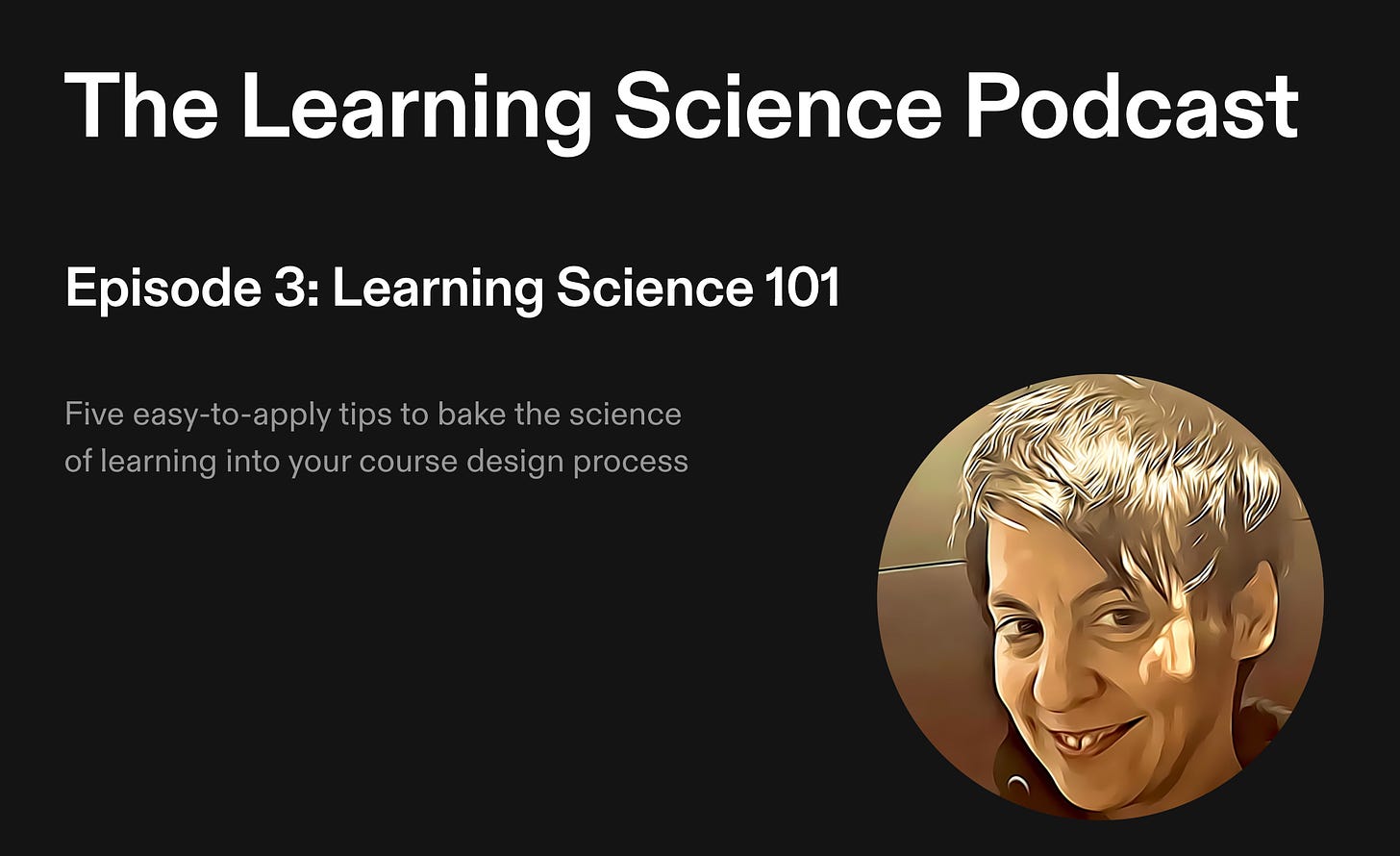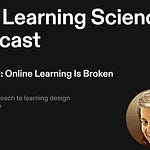Transcript: Hey folks! Welcome to the latest episode of my Learning Science podcast - it’s really great to have you here.
For the new subscribers who have joined us since last time - welcome! I’m Phil and I’ve been researching & experimenting with online & hybrid course design for over 20 years now, as an academic as an instructional designer and, more recently, as a Chief Learning Officer & founder in the world of ed tech.
Today, I’m going to be talking about the question I get asked more than any other: in a nutshell, what does the research tell us about how we should design courses? What are the five big things do I need to know & do to bake the science of learning into how I design my courses?
Here’s my answer, broken down into five golden rules (distilled from over 200 pieces of research on the subject):
Golden Rule #1: Learners learn better when information is minimised & presented in a way that doesn’t unnecessarily tax their working memory.
What it means in practice: use the Minimal Viable Content Framework (aka the 10/80/10 rule) to ensure the correct balance of content and activity. When selecting modes, be mindful of cognitive load - e.g. a 3 min video or piece of audio is far less of a strain on working memory than the same 500 words delivered as text on a page.
If you read one thing…. Hardman, 2022
Golden Rule #2: Learners learn better when learning objectives & outcomes are aligned to their personal as well as professional and “in course” goals.
What it means in practice: take time to understand your learners’ personal & professional pain & aspirations - i.e. you should conduct thorough discovery work to ensure that you have a crystal clear understanding of who your learner is and how to motivate them through both the content & the structure of your course.
If you read one thing…. Mager, 1997
Golden Rule #3: Learners learn better when the learning experience progresses from simple to complex at an appropriate level for the learners in question.
What it means in practice: take time to understand your learners’ Zone of Proximal Development (ZPD). Again, this is a process of Discovery to identify what your learners can do without help and what they could never do, even with help. Between those two extremes is their so-called ZPD - the things that they can hope to accomplish with help from an expert or a more skilled peer. This is your course “sweet spot” and where your experience needs to sit in order to optimise for both motivation & mastery.
If you read one thing…. Vygotsky, 1978
Golden Rule #4: Learners learn better when they are driven more by internal reasons than external rewards or consequences.
What it means in practice: take time to understand & articulate how the experience is connected with your learners’ broader life goals (see Golden Rule #1). In the process, to really drive their intrinsic motivation you need to make sure that your learners feel a sense of of competence & progression towards both their course & life goals (e.g. through feedback) regularly, ideally at least once per hour.
If you read one thing…. Ryan & Deci, 2000
Golden Rule #5: Learners learn best when the experience is as authentic as possible.
What it means in practice: as a rule, the most effective design strategy is to select content, activities, assessments & modes which best replicate real scenarios.
We often think of immersive learning as complex experiences involving virtual realities or work placements, but simple strategies like using case studies & having learners work on real problems using real assets (e.g. give feedback on a real life project plan) is as effective at building an authentic experience and supporting learning transfer as more complex approaches.
If you read one thing…. Herrington & Herrington, 2007
That’s all for now! If you have comments or questions, I’d love to hear from you in the comments section below the post. If you enjoyed this, please subscribe for more & share it with your people.
Finally, if you want to get hands-on and design a course with me, you can apply to join my course design accelerator, a hands-on adventure where we work together to design a course of your choice using the DOMS™️ evidence-based principles & process.
The next cohort kicks off in September and can learn more by following the link at the bottom of this post.
Happy designing! 👋










Learning Science 101